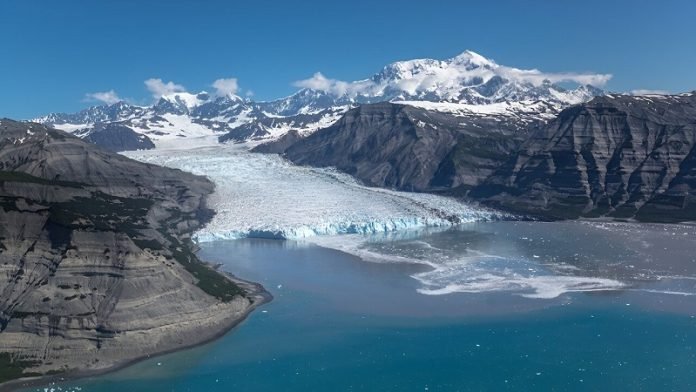
A recent study delves into the mysteries of the Gulf of Alaska, exploring why the region hasn’t experienced a massive underwater landslide, known as a megaslide, for over a million years.
These large-scale geological events can potentially trigger tsunamis, posing significant risks to coastal areas.
The findings, published in the journal Geophysical Research Letters by Sean Gulick and his team, shed light on changes in the geological and environmental conditions of the area.
The focus of the study is the Surveyor Fan in the Gulf of Alaska, where the sixth-largest recorded megaslide occurred around 1.2 million years ago.
This ancient slide covered an area of at least 16,124 square kilometers, with an original volume of sediment estimated at 16,280 cubic kilometers—enough to fill nearly 6.5 million Olympic swimming pools.
Today, the remaining volume is about 9,080 cubic kilometers due to geological processes like subduction, where tectonic plates slide under one another.
Researchers used seismic reflection surveys and drilling data to analyze the seafloor’s topography and the characteristics of the slide.
They discovered that the timing of the megaslide coincides with a period known as the Mid-Pleistocene Transition (MPT).
During this era, approximately between 0.6 and 1.2 million years ago, ice ages began to last longer, leading to significant ice buildups that increased sediment deposits at the edges of the continent.
These heavy sediment deposits likely made the underwater slopes unstable. When a large earthquake hit the region, it probably triggered the ancient megaslide.
However, such massive slides haven’t occurred since then, despite ongoing seismic activity.
Several factors contribute to the current stability of the underwater slopes in the Gulf of Alaska. Firstly, the pattern of sediment buildup has changed.
Ice streams carrying sediment across the continental shelf now spread these deposits more widely along the continental slope. This distribution creates less cohesive, more stable sediment layers.
Additionally, the continuous shaking from seismic activity helps compact the sediment, strengthening the slopes and making them less likely to collapse.
The ongoing accumulation of sediment has also altered the slope’s shape, reducing the critical wedge taper—a measure of the slope’s steepness and a key factor in its stability.
These combined geological processes have resulted in a balance that prevents the formation of megaslides like the one from millions of years ago.
Understanding these dynamics is crucial for predicting and mitigating the risks of potential tsunamis caused by underwater landslides, ensuring better preparedness for such natural events.
Source: American Geophysical Union.



